Mullins Family Farm
Introduction
Text-to-speech Audio
The Mullins family farm was the site of the first Golden Delicious apple tree. The Golden Delicious apple was first discovered in 1912 by Anderson Mullins. His nephew, Bewel Mullins, built a cage around the tree, and kept records of the tree for 30 years. The Golden Delicious apple became widely popular nationwide, and on February 20, 1995, it was chosen to be West Virginia's state fruit. The original tree lived to be about 50 years old, and a historical marker stands in its place today. Clay County holds an annual Golden Delicious Apple to celebrate it.
Images
Golden Delicious apple sign
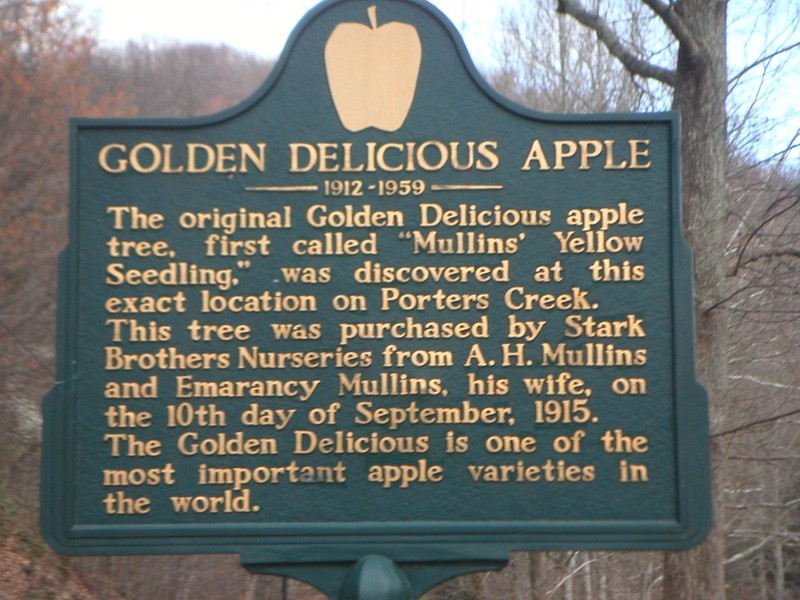
Cage built around Golden Delicious apple tree
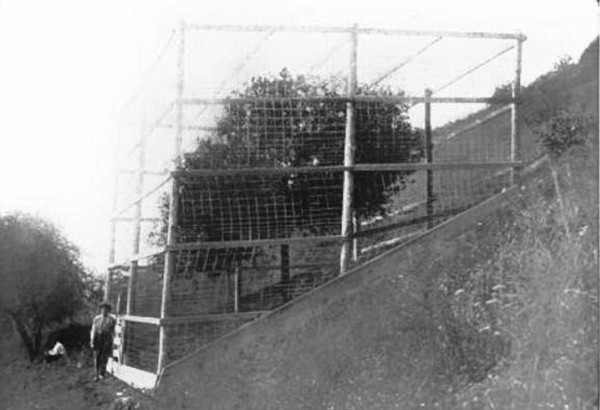
Letter from Anderson Mullins to Paul Stark about the discovery of the first Golden Delicious apples
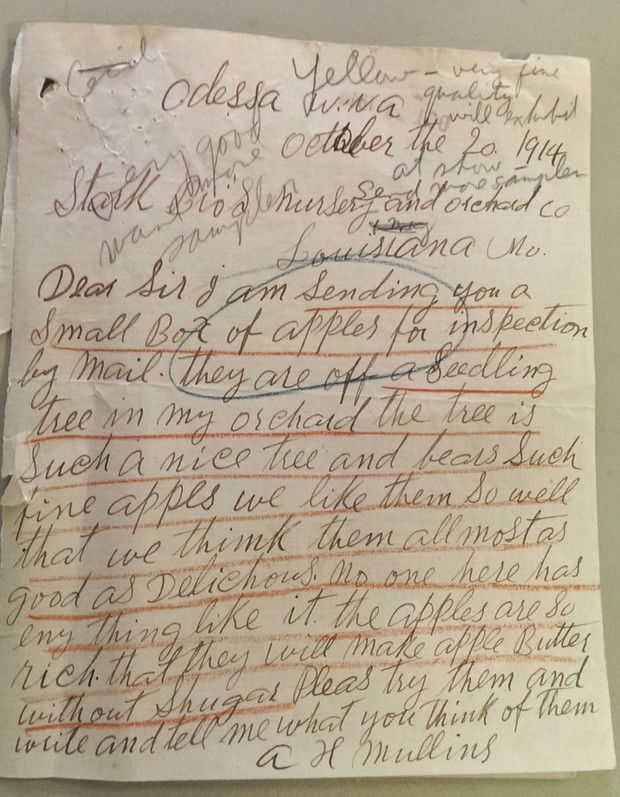
Yates catalog ad 1928
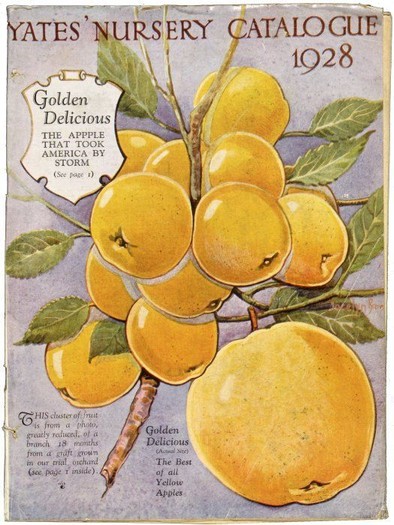
Golden Delicious Apple Stamp
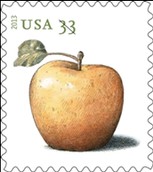
Backstory and Context
Text-to-speech Audio
Believed to be a relative of the Grimes Golden apple, which was discovered nearly 100 years earlier in the Northern Panhandle, the first known Golden Delicious apple tree was discovered in Clay County by Anderson H. Mullins. Mullins sent three of the unknown apples from the tree to Paul C. Stark of Stark Brothers Nurseries. Mullins' letter described them as "so rich that they will make apple butter without sugar."
Immediately, Stark traveled 1,000 miles by railroad and 20-miles by horseback to West Virginia and met up with Mullins. Believing it to be an incredible business opportunity, Stark purchased the tree and the land it grew on for $5,000. Stark built a two-story tall wire cage around the tree to protect it from burglars and vandalism, and hired a watchman to guard it. Stark attempted to insure the tree for $50,000 not only to protect it, but to increase the advertising for the new apple variety he was sure would be a success in the commercial market.
The "Golden Delicious" trees, so named by Stark himself, were reproduced and tested around the country. The success of the tree was lucrative - by 1918, hundreds of orders had to be turned down because Stark could not produce enough of a supply to fit the huge nationwide demand. Stark had predicted that the apples would be sold at a greater price than any other variety of apple, and he was correct - in 1921, the apples could be sold at a prices reaching 50 cents apiece.
The original tree lived to produce apples for almost 50 years, until the tree's death in 1950. Only the historical marker remains in its place today. The Golden Delicious apple's wide-spread popularity led it to have a spot on one of four apple variety stamps issued by the U.S. Postal Service in 2013. West Virginia declared the Golden Delicious as the state fruit on February 20th, 1995. Ever since 1972, Clay County has held an annual Clay County Golden Delicious Festival in the fall.
Immediately, Stark traveled 1,000 miles by railroad and 20-miles by horseback to West Virginia and met up with Mullins. Believing it to be an incredible business opportunity, Stark purchased the tree and the land it grew on for $5,000. Stark built a two-story tall wire cage around the tree to protect it from burglars and vandalism, and hired a watchman to guard it. Stark attempted to insure the tree for $50,000 not only to protect it, but to increase the advertising for the new apple variety he was sure would be a success in the commercial market.
The "Golden Delicious" trees, so named by Stark himself, were reproduced and tested around the country. The success of the tree was lucrative - by 1918, hundreds of orders had to be turned down because Stark could not produce enough of a supply to fit the huge nationwide demand. Stark had predicted that the apples would be sold at a greater price than any other variety of apple, and he was correct - in 1921, the apples could be sold at a prices reaching 50 cents apiece.
The original tree lived to produce apples for almost 50 years, until the tree's death in 1950. Only the historical marker remains in its place today. The Golden Delicious apple's wide-spread popularity led it to have a spot on one of four apple variety stamps issued by the U.S. Postal Service in 2013. West Virginia declared the Golden Delicious as the state fruit on February 20th, 1995. Ever since 1972, Clay County has held an annual Clay County Golden Delicious Festival in the fall.
Sources
"Golden Delicious," accessed July 20, 2017, https://www.wvencyclopedia.org/articles/2129
"Golden Delicious Apple," accessed July 20, 2017, http://www.wvculture.org/history/businessandindustry/goldendelicious03.html
"Little Old Letter: Big Piece of History," accessed July 20, 2017, https://www.starkbros.com/growing-guide/article/little-old-letter-big-history
"The Trail of the Golden Apple," accessed July 20, 2017, https://www.starkbros.com/growing-guide/article/trail-of-the-golden-apple
"Postal Service Issues Apples Postcard Stamps," accessed July 20, 2017, http://about.usps.com/news/national-releases/2013/pr13_004.htm
"Golden Delicious Apple," accessed July 20, 2017, http://www.wvculture.org/history/businessandindustry/goldendelicious03.html
"Little Old Letter: Big Piece of History," accessed July 20, 2017, https://www.starkbros.com/growing-guide/article/little-old-letter-big-history
"The Trail of the Golden Apple," accessed July 20, 2017, https://www.starkbros.com/growing-guide/article/trail-of-the-golden-apple
"Postal Service Issues Apples Postcard Stamps," accessed July 20, 2017, http://about.usps.com/news/national-releases/2013/pr13_004.htm
